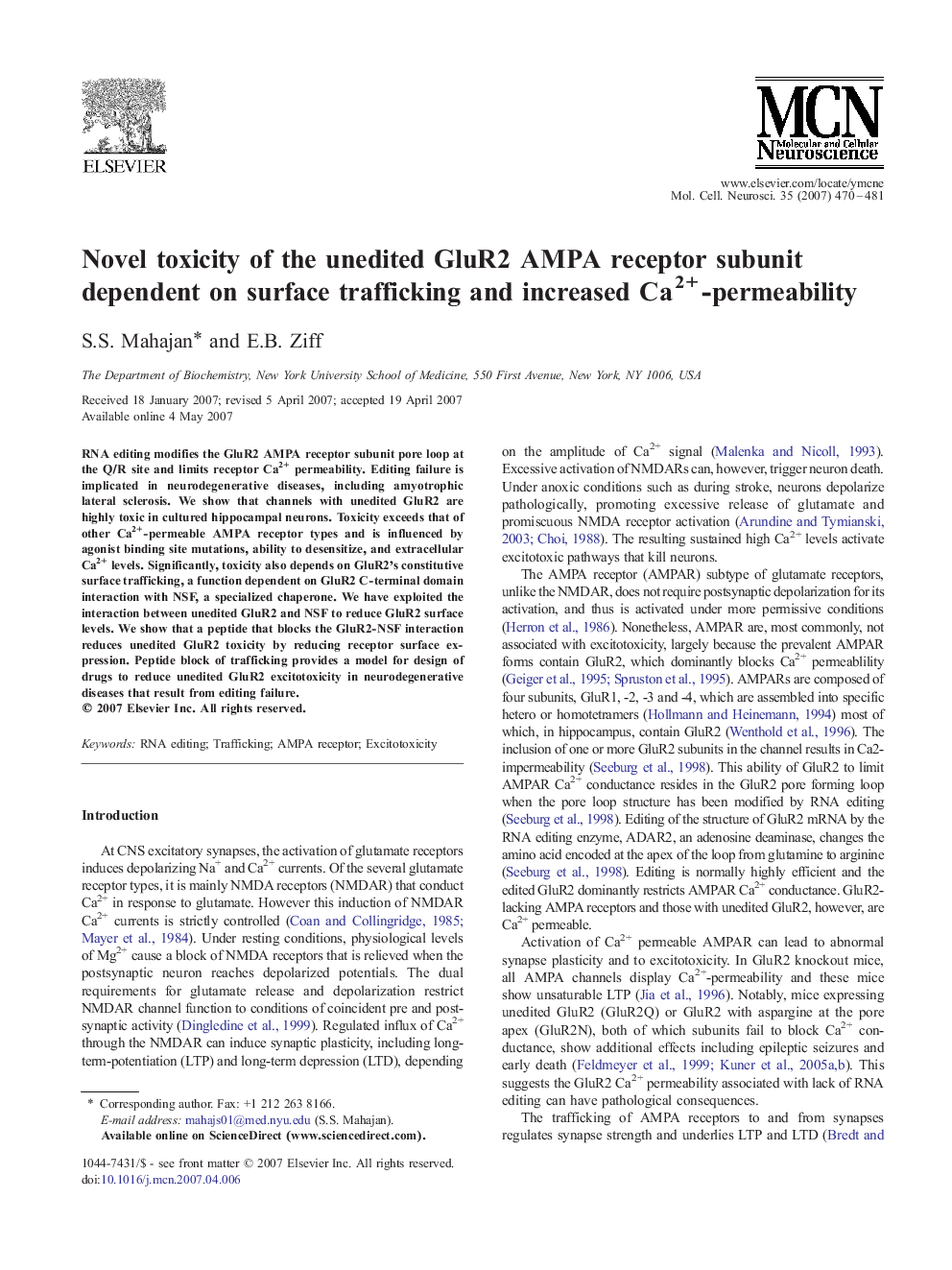| Article ID | Journal | Published Year | Pages | File Type |
|---|---|---|---|---|
| 2199075 | Molecular and Cellular Neuroscience | 2007 | 12 Pages |
RNA editing modifies the GluR2 AMPA receptor subunit pore loop at the Q/R site and limits receptor Ca2+ permeability. Editing failure is implicated in neurodegenerative diseases, including amyotrophic lateral sclerosis. We show that channels with unedited GluR2 are highly toxic in cultured hippocampal neurons. Toxicity exceeds that of other Ca2+-permeable AMPA receptor types and is influenced by agonist binding site mutations, ability to desensitize, and extracellular Ca2+ levels. Significantly, toxicity also depends on GluR2's constitutive surface trafficking, a function dependent on GluR2 C-terminal domain interaction with NSF, a specialized chaperone. We have exploited the interaction between unedited GluR2 and NSF to reduce GluR2 surface levels. We show that a peptide that blocks the GluR2-NSF interaction reduces unedited GluR2 toxicity by reducing receptor surface expression. Peptide block of trafficking provides a model for design of drugs to reduce unedited GluR2 excitotoxicity in neurodegenerative diseases that result from editing failure.
